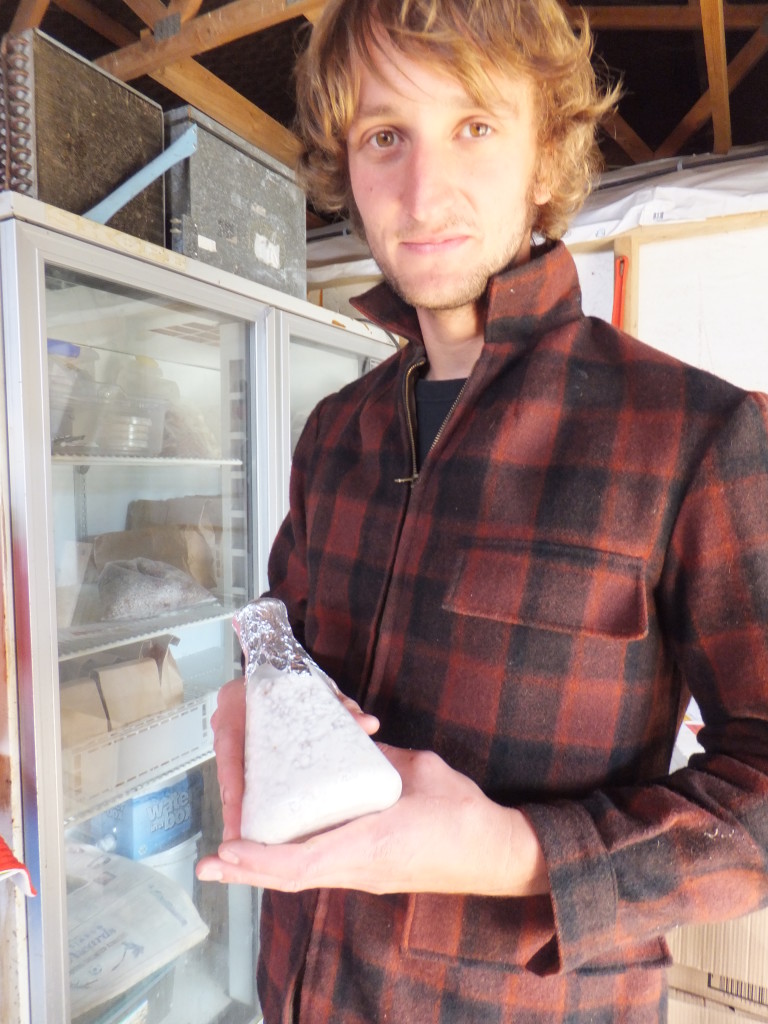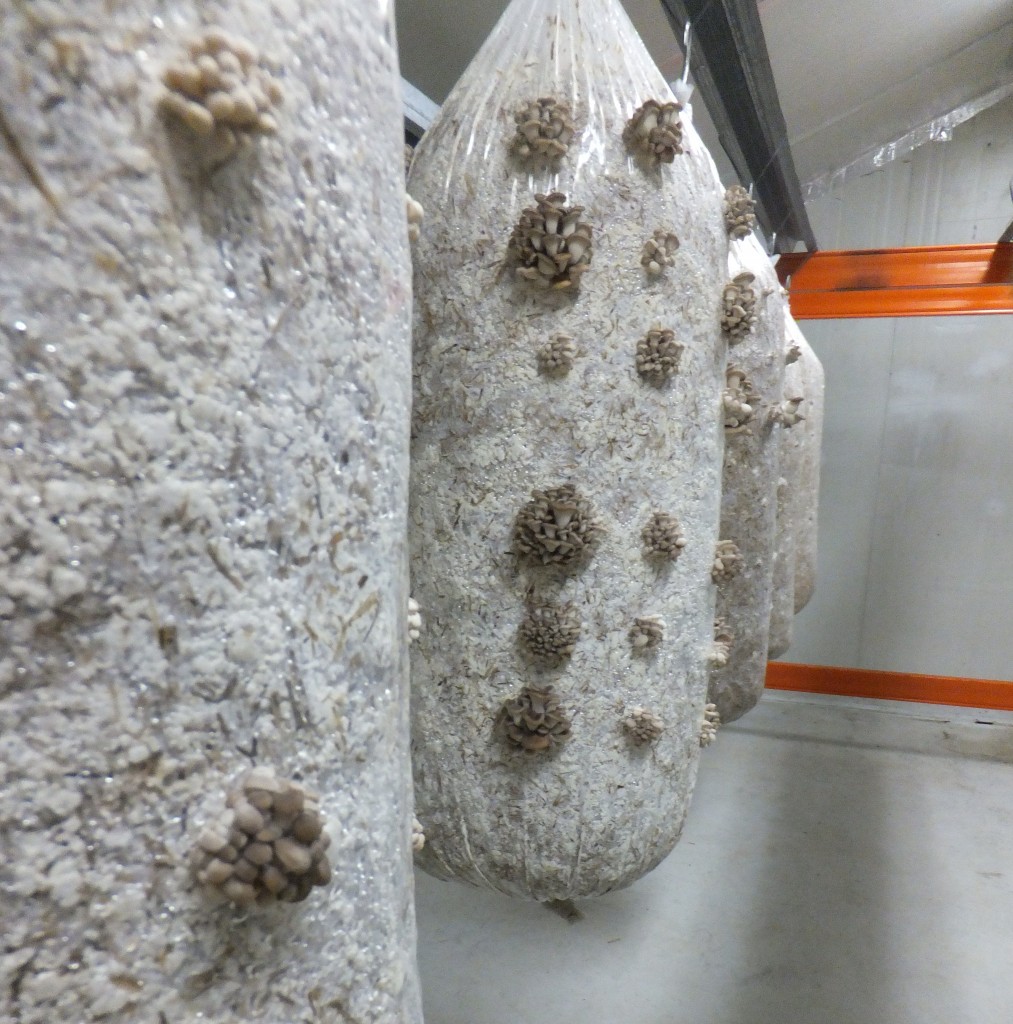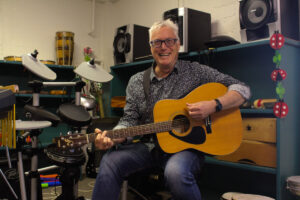Raglan business mushrooms
Lennart Prinz’s organic fungi make for a truly enchanting bite of Raglan’s permaculture scene
Entering Lennart Prinz’s mushroom growing-room is like stepping into Narnia – only instead of a snowy wilderness inhabited by woodland folk and ice queens, you’re faced with three rows of plastic bags sprouting flaccid beige fungi.

Narnia, that is, because the room itself is hidden inside the belly of an ancient farm shed, surrounded by dusty equipment and stale hay. From the outside, the casual observer sees no twinkle of fluorescent light, no sign of sterile cement floor. It isn’t until one passes through the crumbling wooden mouth and veers right, stepping gingerly over building scraps and vehicle parts, that one comes to a door leading into this other, damper world.
Lennart, (Lenny) 26, grows organic fungi on an old citrus orchard east of Raglan. He mainly cultivates oyster mushrooms, selling them fresh, dried and marinated at the local farmer’s market and supplying nearby cafes and restaurants. In his spare time though, Lenny coaxes more exotic fungal fare out of rotting wood and various bare patches in his back yard.
Shiitakes are sprouted the traditional way, on rotting logs drilled with wax-covered holes to lock in moisture. Giant “King Stropharia†– aka “Godzilla Mushrooms†which can grow up to 30cm across, spread ghostly hairs of mycelium on the wet earth behind the rabbit hutch. Native wood ears, originally hoisted from a broken, decaying stump of cabbage tree, spring velvety and deep purple from shards of brittle wood.
“New Zealand farmers used to pick wood ears in the 1930’s and sell them to Chinese sailors during the depression for a bit of extra income,†Lenny says. Since then, the popularity of these particular fungi has waned, largely because people simply don’t know you can eat them. The texture is notably un-mushroom, closely resembling the crunch and chew of cartilage. They’re beautifully strange – and delicious in Thai-style curries.
Lenny’s fascination with mushroom cultivation started on a European OE.

“I was studying film and psychology and did a semester abroad in Germany. I was getting sick of studying, when I was given a book on permaculture. There was a chapter on mushrooms and I love mushrooms – there are so many types in Europe, but New Zealand is really limited in what we can buy at the supermarket. â€
Lenny decided to change that.
Setting up was not particularly easy, however. Due to New Zealand’s strict bio security regulations, importing new strains proved near impossible, so Lenny focuses heavily on what’s available locally and in the wild.
He chooses to use the fungal version of a cutting in order to propagate his oysters, taking a small chunk out of an existing mushroom and “planting†it to create more, in a process reminiscent of Fantasia’s enchanted brooms.
Lenny sprouts his oysters in sacks filled with a mixture of damp straw, the minerals gypsum and lime, and some kind of nitrogen source – in this case, chopped-up gorse. In order to keep the mushrooms free of contaminants, he hangs them from hooks inside a sealed room. Before we can go inside, we take our shoes off so as to avoid dragging dirt into the fungal sanctuary.
The site of a dozen or so bags swinging from metal hooks under flouro lighting speaks of some sort of vegetarian slaughter house, only in this case beings are being born, not butchered, and the smell is that of mouldering hay bales, not blood and bone.
Lenny has plucked a small pile of adult fungi from these bags and tears them into bite-size pieces in his small farmhouse kitchen. He doesn’t use a knife, because tearing them along their naturally perforated frills keeps their cellular structure intact – meaning they maintain their smooth, chewy texture throughout the cooking process.
He stir-fries them in great knobs of butter, cheekily reminding us that oyster mushrooms lower cholesterol anyway, and splashes them with lemon juice and crushed garlic before adding in tendrils of fresh-picked asparagus from out back, and topping the plate off with an oozy, soft-boiled egg. The result is a plate that looks and tastes quintessentially of early summer. Oyster mushrooms, when cooked, are deceivingly delicate, frail yet able to hold their own against much stronger flavours.
Between mouthfuls, Lenny talks about plans to start selling his mushrooms further afield – Auckland perhaps. Mostly, though, he wants to start building growing kits for people to start up their own crops. “I think more people should grow them at home. You don’t have many of the problems when you’re growing on a small scale.â€
Any extra crop can be dried and re-hydrated for later use, he says. “Mushrooms are 90 per cent water. If you dehydrate them at a low temperature, all the goodness and nutrients are maintained.â€
Not that you’re likely to have many left – while they may not be what’s generally intended by the term “magic mushrooms,†there is certainly something enchanting about Lennart Prinz’s product: they’re near impossible to stop eating.




